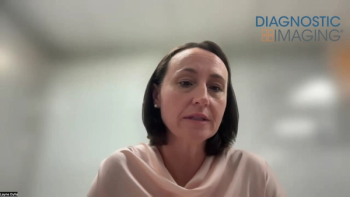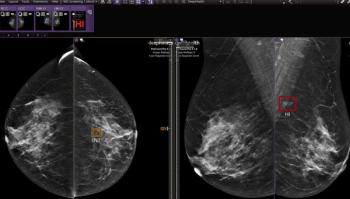
6 Ways for Radiologists to Use Social Media
A few pioneers are using social media in innovative ways - beyond status updates and promotions. Here they detail six social media approaches you can use.
Social media for physicians is not just for marketing your practice. And it’s not just for the young doctors. Yes, it takes time to learn, but it’s free - helping you stay abreast of the latest radiology news, and connecting you with a wide array of colleagues.
But before jumping into the social media fray, take a step back and ask yourself what problems you’re trying to solve, said Lee Aase, director of the
“Nobody has time to waste on frivolity,” Aase said, “but the tools make it possible to connect with people of common interest all over the world.” Through its various social media accounts, the Mayo Clinic is connected with people from more than a hundred countries. “That’s pretty astonishing with no out-of-pocket expense. It’s just your time. You can build affinity groups and communities of interest in a way that 20 years ago wouldn’t be possible,” said Aase.
Whether connecting with your own health care system, other radiologists or health care consumers, you can customize what you want to see and from whom, said Safwan Halabi, MD, a radiologist and director of imaging informatics at Henry Ford Health System. “That’s what social media does really well.”
We reached out to a few health care pioneers using social media in innovative ways, taking the platforms beyond their use as a forum for sharing status updates and promoting their practices. In their own words, these experts detail how six social media programs can help you:
Crowdsourcing
Carl Miller, MD, radiologist at Johns Hopkins Medical Center:
“We used it to select a new clinical system, a web-based image viewer. Ordering physicians can use this lightweight PACS to get access to images wherever they are, like on their iPad or through a web platform. We didn’t know how or where our physicians would use it. It’s a young technology, so we didn’t have an established knowledge base of vendors. We created a crowdsourcing platform to answer those questions and involve physicians in the selection process. Rather than (consulting) one or two peripherally involved physicians, with business people making the decision, we were able to involve over 300 clinicians throughout the enterprise - on all levels - in collecting needs and uses, and evaluating the three platforms we already vetted. They were able to vote, rate and evaluate through this platform. We got a robust, deep feedback of what they needed, what they liked and why. People were excited about it. When you have 300 physicians participate in a vendor selection, you end up with a mandate.”
Lee Aase, director of the Mayo Clinic Center for Social Media:
“A low effort, high potential impact way of staying up on the latest news is using
Carl Miller, MD, radiologist at Johns Hopkins Medical Center:
“I learned about a new type of diabetes, LADA diabetes, an autoimmune type of diabetes. I don’t practice in diabetes care regularly, so I haven’t been reading literature about it. I learned about this new disease from a patient on Twitter. That’s the world we live in now. Patients are experts in disease; they have access to the same quality of information we do. Humans don’t have the capacity to know everything there is to know about everything. The days of memorizing it all are just gone. I was able to be educated on it through Twitter through a tweet chat.”
Safwan Halabi MD, radiologist and director of imaging informatics at Henry Ford Health System:
“From a research perspective, I find myself learning a lot from other colleagues at other institutions by following their tweets and retweeting.”
Doximity
Carl Miller, MD, radiologist at Johns Hopkins Medical Center:
“This social media platform is for physicians specifically. It’s HIPAA compliant and has built-in features for physicians. Physicians are using that to communicate. It’s a physician-to-physician media platform from the same people who founded Epocrates.”
Lee Aase ,director of the Mayo Clinic Center for Social Media:
“Physicians have immense difficulty keeping up with all the journals. Through
Yammer
Lee Aase, director of the Mayo Clinic Center for Social Media:
“One platform we’re using is
Safwan Halabi MD, radiologist and director of imaging informatics at Henry Ford Health System:
“When I first signed on to
Lee Aase, director of the Mayo Clinic Center for Social Media:
“From a job search perspective, LinkedIn is really good because if you’re looking to interview for a position, you can see who is a connection who works there already, or a connection-of-a-connection who can do an introduction for you to find out what it’s like to work there.”
YouTube
Safwan Halabi MD, radiologist and director of imaging informatics at Henry Ford Health System:
“I subscribe to the
“I’m doing a research study on clinical decision support. A great way, instead of email blasts, is to have a video of what the research study is about. It’s so easy to do. You do have to have the basic infrastructure of those who are savvy with it, a video team. But you could do the video on your phone too.”
Lee Aase, director of the Mayo Clinic Center for Social Media:
“Where our physicians have found it helpful is that you can go into depth in discussing and covering subjects that are not of broad interest. You can do a five minute video on a topic, and the goal isn’t to get millions of views, but to provide meaningful content to those who would be interested in it. Physicians are typically concerned about being taken out of context – you can provide all the context. You have the ability to have an extended two to three minute clip from the physician talking about why they did that study.”
Newsletter
Stay at the forefront of radiology with the Diagnostic Imaging newsletter, delivering the latest news, clinical insights, and imaging advancements for today’s radiologists.



























